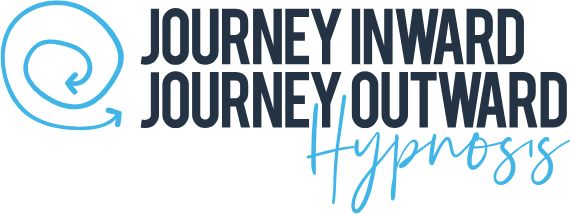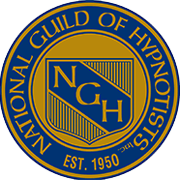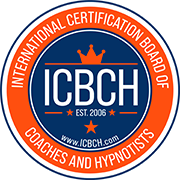How Hidden Emotional Blocks Drain Your Energy
You wake up already tired. The day hasn’t started, but your body feels like it’s dragging sandbags through wet cement. You’ve eaten well. You slept enough. You’re not sick. But something’s off—and it’s not just physical. This quiet, constant drain has nothing to do with your diet or to-do list. More often than not, it’s emotional. More specifically, it’s the weight of unexamined tension—buried reactions, unfinished grief, stored anger—that your body has been holding for years without permission. These aren’t dramatic breakdowns or visible spirals. They’re quiet, subtle, slow leaks. And they’re costing you more than you think.
What Are Emotional Blocks?
Emotional blocks aren’t abstract ideas. They’re held energy—emotion that never got a full breath, a full sentence, a full cry. They're internal no-go zones. Your system labeled them “too much” at the time, so they got filed away in silence. But they didn’t vanish. Instead, they became habitual tensions, mental resistance patterns, low-grade anxiety loops. They whisper things like: “Not now,” “Don’t feel that,” or “That’ll blow everything up.” You adjust around them, building routines and relationships that accommodate their constraints. Over time, the adjustments start to feel like your personality. You forget what you’re avoiding. But your nervous system never does.
How They Form & Go Unnoticed
You don’t always recognize the moment a block forms. It’s not dramatic. Sometimes it’s as simple as a comment that stung but went unacknowledged. Sometimes it’s a decision to suppress anger because the situation “wasn’t worth the fight.” The formation happens when emotion builds but can’t find a safe outlet. What gets buried doesn’t disappear; it goes quiet and spreads. Often, it ends up in the body. Stored reactions linger because trauma registers within bodies at the cellular level, bypassing the thinking mind entirely. That’s why you might not consciously remember the source, but still feel heavy, hesitant, or inexplicably afraid. The block blends into your baseline.
The Toll on Mind and Body
There’s a cost to carrying what you never unpacked. You can stretch your back, hydrate, meditate—and still feel weighed down. That’s because unreleased emotion accumulates. It throws your nervous system out of sync. Heart rate, sleep, hormones, digestion—all affected. It’s not psychosomatic—it’s systemic. Over time, constant stress wreaks havoc on organs, compounding strain across every major system. Your immune resilience dips. Your muscles tighten. Even your memory gets foggy. You start to wonder why you can’t focus or why you’re irritable for no clear reason. That’s your body waving a flag: something needs release.
How It Shows Up: Work, Relationships, and Beyond
Blocked emotion doesn’t stay put. It leaks into how you move through the world. At work, it might look like chronic hesitation. You second-guess simple decisions. You over-prepare presentations. You micromanage or avoid conflict because imposter syndrome undercuts workplace confidence. In relationships, emotional blocks show up as over-accommodation, withdrawal, or short-temperedness that feels out of proportion. In solitude, they translate to restless distraction—constantly reaching for your phone, food, or a new project instead of being still. These patterns aren’t “just personality quirks.” They’re coping loops, formed in the absence of resolution.
Strategies for Release
You don’t have to unravel every block at once. But you do need to make contact. Start with the body. Emotion isn’t just mental—it lives in muscle, breath, posture. Somatic exercises help regulate the nervous system, bringing awareness to tightness, clenching, or collapse. Body scanning, tension mapping, and shaking exercises can help you sense where you’re holding. Pair this with breath. Deep breathing calms the nervous system by interrupting stress loops and activating parasympathetic pathways. Even ten minutes of focused breathing or movement can begin to unlock something you haven’t felt in years.
Ongoing Habits & Integration
Clearing isn’t a one-time purge. It’s rhythm. It’s learning how to move through emotion instead of around it. That means checking in often, not just when things explode. Journaling, therapy, music, movement—whatever gets you back in contact. When you build daily rituals for reflection, tension doesn’t get a chance to settle in unnoticed. Even small grounding moments matter. Grounding techniques anchor you to now, reminding your body that the past is over and the present is safe. The more often you remind yourself, the more you live from clarity, not reactivity.
One More Way to Reset
Sometimes, a major emotional shift requires a new container—a way to declare: I’m starting again. That’s where life changes like returning to school can play a huge role. It’s not just about career or credentials. Going back to school can reignite a sense of possibility. It opens doors not just outward but inward—reminding you that growth is still on the table (learn more). The emotional lift is real: confidence returns, goals sharpen, and new parts of you come online. Especially when the path offers career-aligned degree options for working adults, the journey feels not just accessible—but personal.
The Other Side of the Block
When emotional blocks start to lift, so does everything else. Breath deepens. Focus sharpens. Rest feels like rest. You stop feeling like you’re fighting the current, and start moving with it. That old ache behind your eyes—the one that made everything feel heavier than it should—fades. You start showing up differently. More present. More decisive. More alive. That’s not magic. That’s what happens when your body finally realizes it’s safe to stop bracing. When you stop managing your emotional backlog, you get all that energy back. And it’s yours to use however you want.
Discover a transformative path to clarity and peace with hypnotherapy. Visit Journey Inward Outward to explore what’s possible for your life today.









